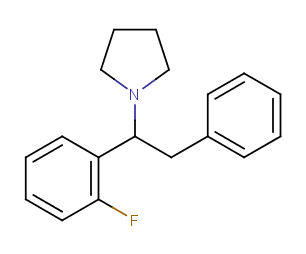roi
Bluelighter
- Joined
- Sep 2, 2013
- Messages
- 1,545

1-(1-(2-fluorophenyl)-2-phenylethyl)pyrrolidine
This is a odd one. Lower doses were rather stimulating, higher doses quite dissociative.
Trip report:
16:10: capsule with 115mg swallowed
16:30: come-up?
16:45: mood lift
17:00: music sounds pretty good
17:10: nice euphoria, but kinda relaxed, not very stimulating
17:20: seems to be a little dissociative, floating away...very nice though
17:25: strong time dilation, feels a little sedating now, I want to lay down and just enjoy the music, still feeling great, slight headache though (faded quickly)
17:40: very light OEVs, barely noticeable
18:00: took a shower, water was really...soft, quite introspective now
18:30: coming down
This is the pyrrolidino derivative of 2-Fluorodiphenidine, so it's not too surprising I guess.
My highest dose so far was 280mg:
18:00: nom nom
18:30: shower
18:40: it's kicking in, coming on strong
18:45: moving is hard, everything is slow, feeling hot
18:50: euphoria, confusion
18:55: time dilation, visuals, I'm floating
19:20: wtf
21:30: I'm fine again.
I didn't take more specific notes as I was quite out of it if you know what I mean..
This one shines around 150-200mg.



